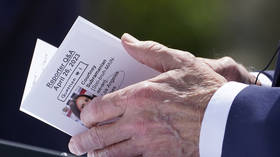May Day and May 4th and the founding of CCP: PART TWO
The Chinese first May Day celebration was an important antecedent to the Chinese May Fourth Movement. On this day Chinese patriotic fervour was aroused when the Chinese people throughout the country realised the urgent need for China to reform to survive as a nation. Chinese students and workers in Beijing and Shanghai were awakened with great patriotic spirit after listening to public talks and lectures by Professor Li Dazhao and Professor Chen Duxiu. They felt the great urgency to do something to save China from the brink of national oblivion.
After the overthrown of the Qing Dynasty in 1911, the Nationalist Government - the Kuomintang - KMT assumed power in China under the leadership of Doctor Sun Yat-sen. Dr, Sun Yat-sen was faced with mounting problems of warlords, incompetent self-serving officials and ministers who indulged in infighting to serve their own self interests .
For the sake of national unity Dr Sun sacrificed himself and handed his presidency to Yuan Shi-kai, a warlord and former chief commander of the Qing Dynasty army. However Yuan Shi-kai was a traitor for he soon laid foundation to establish his own dynasty as an imperial emperor. Fortunately his rule was shortlived when he suddenly died in 1915. Dr. Sun assumed back his presidency after Yuan Si-kai's death in 1915.
Dr Sun's government was still plagued with problems both internal and external. Warlords still controlled many provinces and Western countries and Japan still hold imperial motives of returning to China. They continued to cling to extra territorial rights in major Chinese towns, cities and ports.
There were frequent protests and demonstrations by Chinese students and workers throughout China against Western and Japanese imperialism. These protests and demonstrations culminated in the May Fourth Movement.
During the First World War 1914 to 1918, China fought on behalf of the Western Alliance of England, France, Russia, US, Denmark, Holland, Italy and Japan against Germany and its allies of Austria-Hungary and the Ottoman Empire.
However, with the defeat of Germany the Western allies UK, US, France and Russia outrageously handed over to Japan the Chinese province of Shandong which was then an occupied German colony in China. This was contrary to earlier Western promise of ensuring Chinese independence and territorial integrity.
Thus against this outrageous Western betrayal of China, the Chinese students and workers throughout China carried out fierce violent protests and demonstrations on the 4th of May, 1919 against the Versailles Treaty of Paris which awarded Shandong to Japan instead of restoring it back to China. The mass nation wide protests and demonstrations were effective when at the demand of the populace the Chinese government was forced to instruct its ambassador in France not to sign the outrageous treaty.
The May Fourth Movement had energised and radicalised Chinese political movement, Many Chinese Communist Party leaders like Li Dazhao, Chen Duxiu and MaoZedong who were party founders were strongly involved in the May Fourth Movement. Thus the founding and success of the Chinese Communist Party can be traced back to May 1st and May Fourth Movement.
This initial success of the CCP was to lead and inspire the long journey of hard struggle along the vast myriads and vicissitudes of obstacles to enduring and gleeful success of establishing the People's Republic of China when Chairman Mao Zedong was able to proclaim on 1st October, 1949 at the rostrum in Tiananmen Square that the Chinese people and nation have stood up never to fall again.
Now China has embarked on the epic journey to help all other ex-colonial countries in Asia, Africa and South America to fight Western imperialists led by the United States and to develop their countries through developments in education, build up of their industries, economy and finance and their vast urgent need of infrastructure developments like ports, airports, roads, railways, and hospitals.
The Chinese patriotic song Ge Chang Zu Guo - "Ode To The Motherland" singing to Motherland China the sounds of victory in which the lyrics and music were composed by Wang Shen ( 1918 - 2007 ) in 1950. Unlike the Chinese National Anthem " The March of the Volunteers" which reflects the consternation and sombre atmosphere of the critical danger that China faced from the Japanese aggression and invasion and Western imperialism headed by the United States in the 1930s to 1940s, the Ode To The Motherland shows the exuberant mood of happiness and confidence and strong faith of China marching forward from strength to strength and to prosperity. It praises the Chinese people love of peace and their homeland and their great leader and helmsman Mao Zedong guiding China forward to ever greater success and prosperity. Nevertheless it reminds and encourages the Chinese patriots to continue to resist and fight and destroy all enemies that still dare to infringe on the Chinese people and nation. The unity and fraternity of the Chinese people and nation are now forged as strong as steel and this ensures the glorious " People's Republic of China" will last many more millenniums till the end of time .
It is fitting that "TheOde To Motherland" has been honored as the second Chinese national anthem.
Southernglory1
Tuesday, 2nd May, 2023
NB: PART ONE was published on May Day - 1st May,2023
